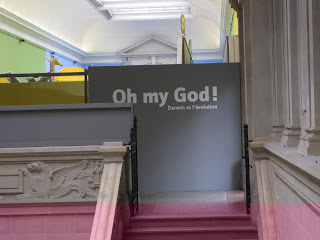5/04/10 (cont.)
On the train from Lausanne to Milano. I
had no problem catching the train, despite some anxiety ahead of time that I
might not be in the right place at the right time. Also, I had a voice message
from Guido (a former exchange student), asking me to call him, but it turned out
he had sent it yesterday. We made contact today as I was waiting in the kiosk
by the track (voie 3) for the train
to Milano to arrive in the station.
5/9/10
The stay in Milano was lovely, but
tinged with melancholy because I will probably not see that family again. I
felt a great deal of love and acceptance – even honor – while there. The family
is very strong, reflecting, I think, the general Italian culture. The two boys
and their families live near Gianni and Rosanna, in the same complex of
buildings. They work in Milano, and that
is one of the issues Guido has about the job. He and Patrizia have recently
purchased a larger apartment in the same complex, which limits his options in
terms of location for a new job.
Although I had requested a quiet stay
in Milano, Gianni and Rosanna wanted to take me to as many sights as time would
permit. Perhaps it was for the best, because they both have lost a good deal of
hearing, and quiet conversation might have been impossible. So we visited many fascinating,
historic, and beautiful sites in the four days there. When I wanted to speak, I
would tap Gianni’s arm and he would turn his best ear toward me and cup his
hand behind it, I would speak loudly, and most of the time he could hear and
understand. If I wanted to say something to Rosanna, I would usually go through
Gianni, although if she said something to me, I could often respond directly to
her, in Italian. Our conversations usually began with Rosanna directing two or
three words to me in English, followed by “comme
se dice…” and an Italian word, which I was usually able to translate into
English, then she would continue in Italian, and I would respond in Italian if
I understood what she said, which was often the case.
On the first day in Milano, we went to
the center of the city and saw Il Duomo (the cathedral), and we spent a good
deal of time wandering around the inside. It is a huge structure, with a
central nave and two large side-aisles, nearly as large as the central nave.
The chiaroscuro of the interior gives
a feeling of mysterious calm. I had an auditory guide, which I used primarily
when looking at the three large windows in the apse. They were designed in the
1500s, I believe (the cathedral was built from the 1300s to the 1500a) and
contain over 400 panels, of which some 60+ have survived intact; the rest have
been repaired or replaced. One of the windows depicted stories from the New
Testament, one had scenes from the crucifixion, and the third showed stories
from the Old Testament, with scenes of the Garden of Eden before and after the
fall near the bottom of the window.
After absorbing as much of the art and
atmosphere as possible, I turned in the audio-guide and bought a booklet of
postcards. Then we went into an underground passage near the entrance of the
church, where the excavated remnants of several previous religious structures lie buried
beneath the square in front of the Duomo. There was a paleo-Christian
baptistery in a round, Romanesque structure (third century?) and fragments of
earlier and later buildings, including two other churches (San ? and San Giovanni)
that had preceded Il Duomo. It was very interesting to see the false-perspective
checkerboard (black-and-white) that seemed to characterize much early Christian
design, both in buildings and on the clothing of bishops and other church
officials I remember many such
illustrations on the walls of ancient churches in Bulgaria.













